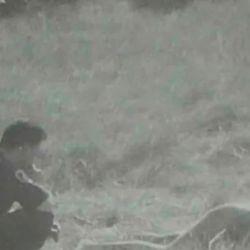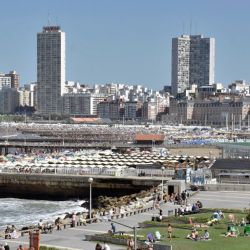The murder and disappearance of a total of 12 prostitutes in Mar del Plata between 1996 and 1999 is just one of the many mysteries in Argentine criminal history. Many suspects were arrested in relation to the crimes, but none were ever definitively linked to the murders.
More than 25 years on from the series of horrific killings, police are still unable to identify a prime suspect. Nevertheless, the supposed perpetrator of the crimes was dubbed "El Loco de la Ruta" (“the Highway Maniac”) by local media. Some, however, maintain that one or more people were involved in the killings.
In the latter half of the 1990s, bodies started to show up next to highways. The corpses of the deceased showed indications of rape, mutilation and other violence. In some cases words – such as ‘puta’ or “whore” – were carved into the lifeless bodies.
On November 29, 1995, the body of María Esther Amaro, a 35-year-old prostitute, was found along Provincial Route 55. The woman had been strangled and the word “whore” had been carved into her back, presumably with a knife.
On December 1, 1996, Adriana Jaqueline Fernández showed up strangled and nude under a bridge on Route 226. A Uruguayan craftswoman, she was 27 years old at the time of her death and had been engaged in prostitution. Her former boyfriend, who had already done time for murder, was initially a suspect but no evidence was found to incriminate him.
On January 21, 1997, the Buenos Aires Province Police found the torso and two arms belonging to a body along Provincial Route 88. Eventually, they identified the victims as Viviana Guadalupe Espinosa, a 26-year-old prostitute.
On May 13, 1997, also on Route 88, the body of Mariela Elizabeth Giménez, a 27-year-old prostitute, was found, with similar carvings to those found on Amaro’s body. Giménez had been violently smothered to death.
The last confirmed murder blamed on the so-called “Highway Maniac” happened on October 20, 1998, when the legs of 25-year-old María del Carmen Leguizamón showed up on Provincial Route 88. The rest of the victim’s body has never been found.
Between July 1997 and late 1999, seven other prostitutes also disappeared: Ana María Nores, Patricia Angélica Prieto, Silvana Paola Caraballo, Claudia Jacqueline Romero, Verónica Andrea Chávez, Mirta Bordón and Sandra Villanueva. All these cases, like the aforementioned murders, were attributed to the killing spree of the “Highway Maniac.”
At the time, the Buenos Aires Province Justice & Security Ministry came under increasing pressure to find the killer. The portfolio offered a reward of some 30,000 pesos for anyone who had information on the serial killer. When they received no news, they decided to raise the amount to 300,000 pesos.
In 1997, the Buenos Aires provincial police created a “Division of Serial Killings,” and they liaised with the United States’ Federal Bureau of Investigation (FBI) for assistance.
Alleged sightings
According to accounts given by some witnesses, Nores (who remains missing) and Amaro (who was murdered) were both seen getting into a burgundy Ford Galaxy. In testimony, the alleged murderer was said to be around 45 years old, bald and blonde.
On June 26, 1997, the Police seized a burgundy Ford Galaxy vehicle owned by José Luis Andújar, who ran a disco on Provincial Route 88, where several of the victims were found dead. After conducting a three-day expert examination of the vehicle, remains of blood and black hair were found on the mat. They were human but they had nothing to do with the disappearances and murders.
On January 14, 1999, 25-year-old Verónica Andrea Chávez went missing on her way to her job working the cloakroom of a club in Mar del Plata. Witnesses also claimed she worked as an escort and prostitute. Days later, an address book was found in her home with the names and phone numbers of her regular customers, which included the names of local policemen and politicians, among them Prosecutor Marcelo García Berro.
Judge Pedro Hooft, overseeing the “Highway Maniac” casefile, ordered that all numbers written the book be intercepted and that phone records for the Salta 1337 brothel in Mar del Plata – where at least three of the 12 victims (Nores, Chávez and Carcaballo) worked – be investigated.
On August 9, 1999, Judge Pedro Hooft ordered the arrest of 10 policemen and four civilians, indicting them all for their role in the disappearances of Nores, Chávez and Carcaballo. They were also investigated for another case since there was evidence to link them.
This gang had been allegedly headed by non-commissioned officer Alberto Adrián Iturburu and covered by prosecutor García Berro. According to the investigation, they were in charge of extorting 100 pesos from the prostitutes in exchange for protection and letting them do their job. In theory, those who did not pay or wanted to leave the business were murdered.
However, case prosecutors ultimately could never link the suspects with the three disappearances or the other murders allegedly committed by the “Highway Maniac.” The gang members were acquitted in 2004.
Other suspects were also probed. Héctor Julián Barroso, a grocer sentenced to 30 years in prison for murdering two prostitutes in 2003 and 2004, was linked to the crimes but never charged. Guillermo Moreno, a pig farmer and the ex-partner of María Esther Amaro when she disappeared, was found not guilty in a 2003 trial into her death and acquitted.
Margarita Di Tullio, known as “Pepita la pistolera,” was a thief, drug-dealer and madam, owner of two brothels in Buenos Aires Province, also linked to the murders. Five of the prostitutes allegedly worked for her, but no charges were ever brought.
by Gastón Marote, Noticias Argentinas




















Comments